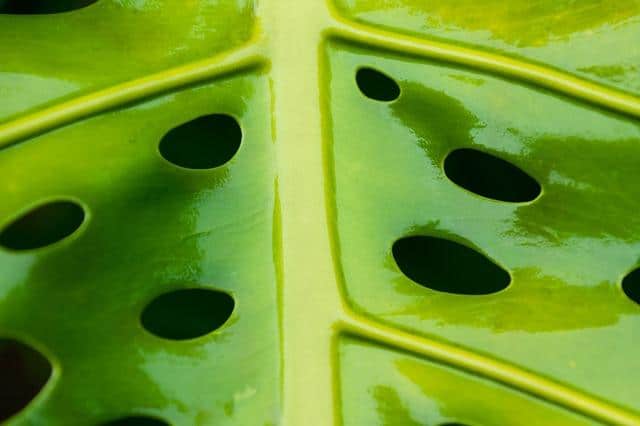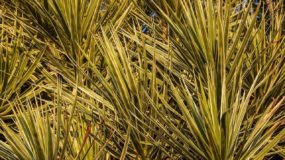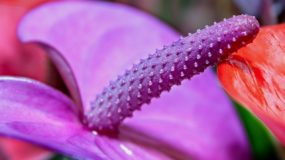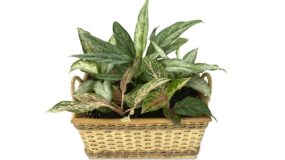Monstera is a houseplant with over fifty varieties. The flower is unpretentious, so leaving a monster at home does not cause difficulties.
Florists like this plant. Thanks to its bizarre shapes and rather large size, the monstera is widespread. If you carefully look at the pictures of the monstera, you can see large leaves of a bizarre shape. I think it was because of them that it got such a name.
It is not difficult to grow a monstera in an apartment environment, but a beginner grower may have difficulties, because you still need to follow the standard rules.
Monster Care Secrets
- Temperature. The monstera is not picky about the temperature regime, it grows faster and develops at high air temperature. In the warm season, the temperature is 22-25 degrees, in winter - 17 degrees abound. Monstera survive and 10 degrees, but in such conditions will stop growth and development. Drafts are fatal for a flower.
- Lighting. I do not advise you to keep the pot on the northern windowsill, because in low light conditions the monstera grows poorly. As for the southern windowsills, in this case, protect the monster from the rays of the sun. Ideal option - bright, but diffused lighting, on the western or eastern windows.
- Humidity. Monstera has large leaves. Consequently, a large area of evaporation. Spray the flower constantly, which will positively affect the condition. I advise you to use water at room temperature. Keep an eye on the leaves and remove dust accumulated in a timely manner with a damp cloth.
- Watering. This exotic loves water, especially if it’s summer outside. Water abundantly during this period, guided by the level of dryness of the soil layer. Soft water is suitable for irrigation. Reduce watering in the fall, and in winter carry out the procedure two days after the drying of the soil. Do not allow waterlogging, otherwise it will lead to decay of the roots and the appearance of spots on the leaves.
- Top dressing. Monstera, like dracaenaneeds additional nutrition. During the spring-summer season, feed twice a month to avoid growth retardation. Young specimens are optional. It does not hurt to support the flower, and pull the leaves with a rope. If the old plant does not grow, trim. As a result, the side shoots will begin to develop faster.
- Aerial roots. Feature Monsters. They can be found on each leaf, but I do not advise cutting. Dip the roots in an additional flowerpot filled with nutrient soil. If the roots are short and it is impossible to substitute a pot under them, lower them into a suspended water bottle or wrap them with wet moss.
- Bloom. In natural conditions, blooms annually. In a room environment, flowering is almost impossible to achieve. With proper nutrition and proper care, the monstera is able to please the first large inflorescences at the age of two.
If you provide the flower with proper care and care, it will become an adornment of the interior of any room, whether it is a living room or kitchen.
Kinds
There are various types of plants, but the housewives grow an “attractive monster” at home.The genus of the flower is diverse and has several dozen species that are found in the natural environment in South American rainforests.
6 most famous types of monstera
- Attractive. The most common type of creeper. In the greenhouse, the height reaches twelve meters, and in room conditions no more than three. With proper care, adult monsters bloom annually, and the fruit ripens for 10 months. There is a variegated form, which is more capricious, grows more slowly and loves more warmth. Thanks to the white stripes, the leaves look spectacular, but moist air and a lot of light are required.
- Climbing. It is found in the natural environment in the mountain forests and tropics of Central America. It has large, leathery, heart-shaped, strongly dissected leaves, the diameter of which reaches 60 centimeters. The length of the cob is 25 centimeters, the thickness is 15. The berries with the smell of pineapple are considered the highlight. The pulp of the fruit is edible. Sometimes a burning sensation appears in the mouth, since there are crystals of calcium oxalate in the fruits.
- Holey. The view is characterized by perforated leaves, due to which the monstera looks exotic. You can meet a climbing vine in the American tropics. The length of the oblong ovoid leaves reaches 90 centimeters, and the width is 25. The length of the white bedspread is 20 cm, at the cob this indicator is 10 centimeters.
- Slanting. The leaves of the monstera, whose homeland are Brazilian rainforests, are the most elegant and have an elliptical shape. The length of the whole leaf is 20 cm, the width is 5. Under natural conditions, small inflorescences appear on a short peduncle. In an apartment, it is impossible to wait until a flower appears.
- Monstera Borzig. This Mexican variety cannot be called powerful. It is characterized by thin stems and leaves with a diameter of 30 cm. In the culture, the subspecies appeared by splitting during propagation by seeds and further selection. It can be grown indoors.
- Monstera Adanson. The height of the liana, found in the rainforests of Brazil, reaches 8 meters. Thin leaves, densely covered with holes, are medium in size and ovoid in comparison with other species. Blooms rarely at home. If this event occurs, you can admire the light yellow ears on a short peduncle.
These are all kinds of monsters that deserve attention. Having looked at the flower shop, you can easily buy any of them. If the flower is not on sale, pay attention to croton. Just remember, he is more demanding in care.
Monstera Breeding

I have recommendations that will help you reproduce simply and efficiently. There are several ways and I will consider each.
The first way - cuttings
The most common and simple technique that helps rejuvenate the plant. Use a sharp knife or secateurs to cut the stalk with an aerial root. Be sure to treat the place of cut with charcoal, otherwise in the future the infection will hit the monstera.
In the case of an old bare plant, a separate technique is used. Cut the stalk into cuttings. The main thing is that each fragment has three eyes. Cut the slices with charcoal and dry. Plant blanks in separate pots and cover with jars. Subject to daily watering a month later, the cuttings will shoot.
Method two - propagation by aerial roots
- Wrap some of the uppermost roots with moist moss and drop them into a container of water. As soon as the air roots take out small roots, cut off the top, sprinkle the cut with charcoal, and plant the stalk in a pot.
- Releases apical shoots with monster roots in late spring. Despite the procedure of reproduction, the plant continues to grow and releases shoots on its sides, due to which it becomes rejuvenated and broken.
The third way - seed propagation
Initially prepare a warm room with diffused lighting and a stable temperature.After planting, spray the soil regularly so as not to dry out. Four weeks later, shoots will appear.
Six months later, the seedlings will release leaves, and a year later from the moment of sowing the seeds, a strong plant with a developed root and leaves will be available. Dive seedlings when it becomes crowded in a pot.
Video instructions
If your floriculturehobby, and monstera is a favorite ornamental plant, there will be no problems with reproduction. And all because the beloved business brings pleasure, and the result in this case is easier to get.
Breeding problems
If you want to grow a monstera, information on common breeding problems and their solution will be useful.
- Decay of the root system. The reason is excessive watering or watering with cold water.
- Leaves turn yellow, without signs of decay and wilting. The reason is that the flower needs to be fed using complex fertilizers. It does not hurt to periodically update the topsoil with the addition of humus.
- Pests. If the leaves are covered with bright dots, it means that the monster was struck by the pest Trips, a colony of which can be found on the back of the leaf. Insecticides will help to cope with thrips.
- Young leaves bend, dry and fall. The reason is the defeat by the pest of the mealybug. You can solve the problem with a soapy rag, which is recommended to wipe the stems and leaves. After the flower, treat with 0.15% Actellik solution.
- Lifeless and sluggish leaves with the appearance of cobwebs. The reason is the defeat of the spider mite. To destroy the pest, use spraying and wiping with soapy water. In the event of a severe defeat, Actellik will come to the rescue.
- Leaves dry and fall, brown plaques appear. The reason is the defeat of the scale. To combat the scourge, the methods described in the paragraph on mealybugs are suitable.
Monstera will report problems on her own. Excess moisture leads to large-scale yellowing of leaves, their gradual yellowing indicates a lack of nutrition. If there are few leaves in the lower part of the stem, it means that there is not enough light, and their mass drying out gives a hint of the high temperature in the room. If thirsty, the monstera will report this by the appearance of brown spots on the foliage.










